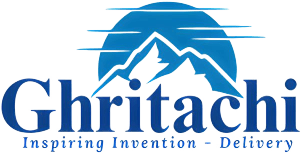To ensure your site pages rank for the proper intent, be sure to include the focus keyword for each page in the title. In this section, we’ll focus on keyword research and how keywords should be incorporated into your content. We’ll also discuss the importance of including images in your content. They should know where to click and how to navigate through your site. A beautifully designed website is nice, but you should make it your top priority to create a user-friendly website first.
Mark Up Subheadings with Header Tags
Before publishing content (text, images, audio, or video), the first step is to do keyword research. The page meta description is shown on the search engine results page (SERPS). It has to be descriptive, up to 200 characters, and unique for each page. No need to include your domain in the title – There is no need to include your domain name in the title because this is added automatically by Google. You can make use of the 70 characters to provide an accurate description of the page. An exception to this rule is when you have a strong brand that people can easily recognize.
Social Media Marketing
They tell search engines about the scope of your article and can improve your rankings if done right. The same applies to your website structure—the categories on your site and the way posts and pages are organized. Having good on-page SEO assures search engines that your website has high-quality content that is worth ranking highly. On the other hand, poor on-page SEO can impact your site’s rankings negatively. As marketers, helping search engines answer that basic question is one of our most important tasks. Search engines can’t read pages like humans can, so we incorporate structure and clues as to what our content means.
- In this post, you’ll learn everything there is to know about on-page SEO.
- Regularly review the performance of your SEO strategies at scale and make iterative improvements.
- By using machine learning, Google can determine the true intent of the user.
- Having internal links helps search engine crawlers find more related content to a page.
On-Page SEO vs Off-Page SEO: Key Differences and Importance
Effective on-page SEO also improves user experience, which can increase engagement and conversion rates. Technical aspects include optimizing site speed, ensuring mobile responsiveness, and improving URL structures. Authoritativeness shows that you are a trusted source in your niche. Building backlinks from reputable sites, gathering positive reviews, and sharing endorsements can strengthen your authority. Publishing detailed, well-researched content also contributes to this. One important metric is bounce rate, which measures the percentage of visitors who leave your site after viewing only one page.
Too many internal links using the same, keyword-stuffed anchor text can appear to search engines that you’re trying to manipulate a page’s ranking. First, ensure that your website works correctly and that your technical SEO is up to par. Secondly, create content that is user-centered and focused on the right keywords. Thirdly, work on the usability and speed of your site to help users and search engines around your website. Add keywords to the beginning of your page titles – When possible, add your target keywords to the beginning of your page title. This helps search engines understand right from the beginning what the page content is about.
If you’re opting to blog, make sure your content is well written and written with your audience in mind. There is no use in creating content if your audience doesn’t understand it. When you set a URL for a page, you’ll want to include the keyword in the URL. If you’re trying to rank for a particular keyword, Google will look for it in your URL, too. By placing it in the URL, Google SEO Anomaly will understand the context of your page better. If Google saw your title said “How to Change a Tire” but your page just listed different types of tires, they wouldn’t rank your page for that keyword.
Key elements of on-page SEO include optimizing title tags, meta descriptions, content (including keyword usage), internal links, URLs, images, and ensuring a positive user experience. These elements collectively contribute to improved search engine rankings and user engagement. High-quality content properly optimized for your target keywords is more likely to attract links and to rank in Google. Aside from your site content, technical SEO factors such as site speed and title tag placement are also ranking factors. By taking a holistic approach, you are “checking” as many boxes as you can for Google, giving your site the best shot at ranking and increasing overall organic traffic.
On the other hand, my voice search study gives bloggers and journalists data that they can EASILY reference. You probably already have sitelinks underneath your result when you search for your brand in Google. For example, I wanted to get in the Featured Snippet for the keyword “nofollow links”. And now you’re ready for our second strategy to help improve your SEO. It’s important to review URLs before publishing a web page because most Content Management Systems (CMS) will auto-generate the URL based on the title of a web page.
You can also follow some best practices for page speed, like compressing images, eliminating unnecessary website code, and more. That said, it’s an on-page SEO basic practice to include your target keyword in your URLs. Get a complete list of SEO best practices to boost your website’s ranking in the organic search results.
Large images slow down your site, frustrating users and hurting rankings. Well-structured, clear content makes it easy for users to find information quickly. Using headings, bullet points, and formatting improves readability. Most search engines use this to understand a site’s relevance and quality. This helps them more effectively match your website to user searches. The content on your website is your chance to gain the trust of your potential customers and prove your authority.
